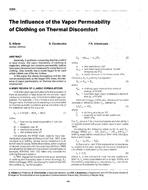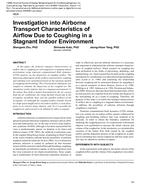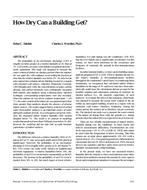Current moisture analysis methods for walls ignore air leakage effects or are not directly applicable to multilayered walls. Mathematical equations were developed for water vapor flow, vapor pressures, and moisture accumulation under steady-state conditions with homogeneous one-dimensional airflow through a multilayered wall. A computer method was developed on the basis of these equations. With this method, a better qualitative understanding may be gained of the effects of air leakage on moisture accumulation.
Sample analyses show that significant moisture accumulation should not be expected in non-hygroscopic cavity insulation, with or without air leakage. The location of condensation may change with changing air leakage rates. Diffusion vapor flow and temperatures are affected by air leakage. Consequently, diffusion and convection may not be treated as independent and additive. Doing so may lead to significant overestimates of moisture accumulation rates. Although the practical use of this method is limited, it is a step toward the development of more comprehensive and realistic methods of moisture analysis.
The information presented should be useful to engineers, researchers, and others interested in building performance.
Citation: ASHRAE Transactions, 1985, vol. 91, pt. 1A, Chicago, IL
Product Details
- Published:
- 1985
- Number of Pages:
- 20
- File Size:
- 1 file , 1000 KB
- Product Code(s):
- D-CH-85-2879


